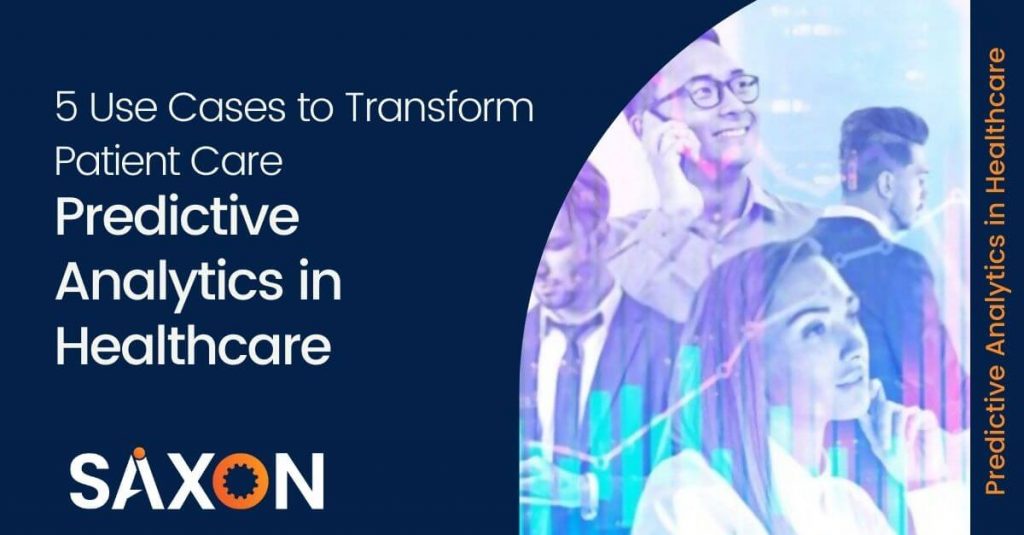All of us know that Healthcare transformation is long overdue even before 2020, but the pandemic forced the adoption of digital technologies.
More than any other sector, Healthcare workers across the globe had to adapt efficient strategies to meet the overwhelming demand while also maintaining the safety of their front line from the virus. Previously healthcare was not known for quick technology adoption, evidence shows that healthcare can take as long as 18 months for minor tech changes.
The pandemic not only forced changes like Telemedicine but also innovative ways to utilize the available resources to maximize care for everyone eligible. Data analytics, Artificial Intelligence, and Cloud Computing continue to remain among the big healthcare trends. Let us look at Data analytics in more detail in this post.
Clinical decision-making and healthcare operations are among the few things in this world that need precision. What brings you precision here?
Predictive analytics can always generate the needed insights with significant precision. Data is already omnipresent in disparate healthcare systems and organizations need to encounter ways to leverage it efficiently. Data is already stored digitally: 94% of the hospitals in the US are implementing Electronic Health records. The next step is to leverage this information for data analytics that can be applied to patient treatment, operations diagnostics, and resource management.
Is it true that Healthcare organizations are adopting Predictive analytics? As per a 2019 survey from the Society of Actuaries, 60% of the healthcare executives are already using some form of predictive analytics to adjust care delivery models. Predictive analytics turns out to be another helping hand for healthcare providers to improve patient outcomes, optimize costs and resources.
A Few Value-driven Predictive Analytics Implementations
- Philadelphia-based Penn Medicine leveraged predictive analytics for Palliative Care. Leveraging data from patients’ EHR and machine learning, they could predict the high-risk individuals upon arrival. The analysis helped them to increase their reach of Palliative Care to the seriously ill population.
- A multi-specialty medical group with 900 facilities, Envision Physician Services leveraged predictive analytics to estimate the number of daily emergency room visits. The provided results are 85% accurate and they could optimize resources for patient care and manage the needed equipment.
- Vanderbilt University Medical Center deployed predictive analytics to forecast expected surgeries to optimize their staff. It is not just the staffing efficiency that was realized by them, but they could recoup costs equalized to the salaries of 2.8 anesthesiologists.
Looking at the value realized from these initiatives, you might be interested in more predictive analytics use cases that may suit your requirements. Let us have a look at a few of them.
Predictive Analytics Use Cases in Healthcare
1. Remote monitoring of vital signs to provide proactive care for ICU patients
Timely intervention is especially important for patients in the ICU as health deterioration can impact life. Rapid decision-making can only mitigate the risks associated with ICU care; the pandemic has fueled this need. Predictive analytics can be leveraged to identify patients with a high probability to require an intervention in the next hour. Readmission risk for ICU, another critical factor for patient survival can also be estimated using predictive models. Remote monitoring of vital signs can also be enabled to efficiently manage intensivists and critical care staff.
2. Proactive care for at-risk patients
Around 50% of the healthcare spending is utilized for the sickest and at-risk patients. But still, there are a few cases where early care could have saved the lives of many. Early care can be powered by predicting the need for hospitalization in the next few months, probability of serious conditions and ICU stays. All this can have an impact if the data from EHRs, health devices, and home care providers are leveraged.
As per a recent study in Diabetes Care, building predictive models with patient data, including the history of comorbidities and medications, can determine the five- to ten-year life expectancy of older adults with diabetes and help providers develop personalized proactive treatment plans.
3. Care Utilization patterns for efficient resource management
Emergency departments must always vary their staffing levels as per the patient flow. Bed availability and cost analysis are crucial in revenue management for hospitals. Outpatients always prefer less wait times and clinics always must manage no-shows effectively to distribute patients for all the available timings. Predictive analytics can be a savior in such cases, anticipating demand and utilization is always key for efficient resource utilization.
4. Behavioral patterns for patient engagement and satisfaction
Relationships and engagement are getting crucial in Healthcare too. Better care can be equated to good communication, engagement, and informed care management decisions. Healthcare is now shifting into more of a service-oriented and consumer-centric industry. Predictive models utilizing the behavioral patterns, social factors can replicate a better customer persona to customize care and interactions.
5. Predictive Maintenance of Healthcare equipment
Downtime of Healthcare equipment is just not about costs but lives. Healthcare can benefit from the same kind of machine prognostics as in any other industry with more mechanical components. Hardware and software should be equally leveraged for proactive equipment interventions.
Are you interested to leverage predictive analytics in your business ecosystem? Please reach out to us. We would be excited to share more information.

